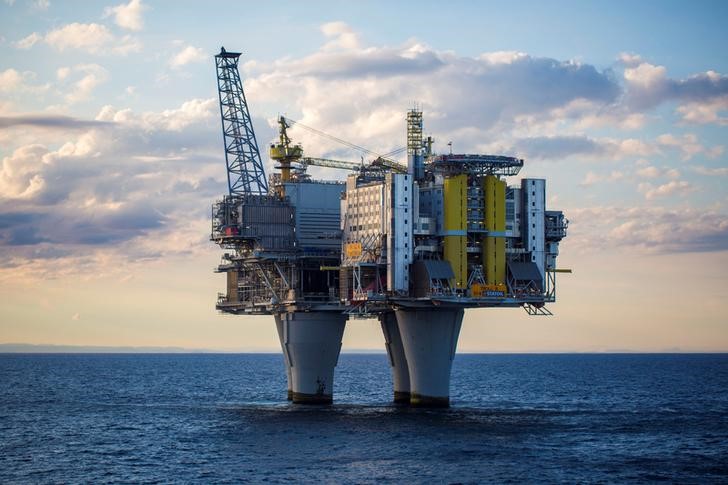By Barani Krishnan
Investing.com - The best-laid plans of hedge funds go oft awry.
A second-straight week of large crude builds in a market expecting a draw messed up, to some extent, the bullish narrative in oil on Wednesday. That prevented West Texas Intermediate crude from cracking the $63-a-barrel resistance and Brent oil from getting past the Saudis' first-aspired-to target of $70.
New York-traded WTI settled down 12 cents, or 0.2%, at $62.46 a barrel after the U.S. Energy Information Administration reported a crude inventory rise of 7.24 million barrels for the week to March 29, versus market expectations for a stockpile drop of 425,000 barrels.
London-traded Brent crude, the global oil benchmark, was down 4 cents, or 0.1%, at $69.33 per barrel by 2:46 PM ET (18:46 GMT).
Both benchmarks hit five-month highs earlier in the session, with WTI reaching $62.98 and Brent $69.96.
The crude inventory build reported by the EIA came on top of the previous week's rise of 2.8 million barrels.
Offsetting some of the negative sentiment from the crude build, the EIA also said gasoline inventories fell by 1.78 million barrels, compared to expectations for a draw of 1.54 million barrels. Distillate stockpiles dropped by 2.0 million barrels, compared to forecasts for a decline of 506,000.
Those declines, which came on the back of refinery output running steadily at just under 86.5%, helped boost prices of gasoline and heating oil, which acts as a proxy for distillates and diesel. Gasoline has, so far, been the star of this year's energy rally, gaining 47%, while heating oil has risen 19%. (AAA's Daily Fuel Gauge Report shows pump prices nationally rising, too: up 19.3% this year to an average $2.703 a gallon.)
The inventory build reported by the EIA also did not unduly affect Wednesday's market as many took it to be the result of distortions caused by the recent closure of the Houston Ship Channel. A fire late last month at a chemical storage facility led to the shutdown of the important hub for crude oil imports and refinery runs. U.S. crude exports have also slid due to the outage, reaching just 2.72 million barrels per day last week after record highs of 3.6 million earlier in March.
WTI remains up 37.6% for the year and Brent 28.8% from four months of stiff output cuts by global oil producers led by Saudi Arabia. Investing.com's daily technical outlook has strong buy recommendations on both the benchmarks, with WTI trading above the 200-day moving average of $61.05 and Brent just under the 200-DMA of $69.64.
Even so, traders were concerned whether crude builds would continue showing up in coming EIA reports as that would signal a reversion in at least some of the bullish fundamentals.
"The shipping issues at the Houston Ship Channel makes the data set noisy, but the crude build was impressive regardless," said John Kilduff, partner at New York energy hedge fund Again Capital.
"The uptick in domestic production was another bearish element," he said, referring to the EIA's reporting of a 100,000 barrels build in U.S. output last week to a new record of 12.2 million bpd.
Some, like Scott Shelton, energy futures broker at ICAP (LON:NXGN) in Durham, N.C., were telling their clients to start getting ready to short the market.
"I think there is a perfect storm of technical-based buying and index-roll-yield chasing that'll be going on" for the next three days, Shelton said. "I have a note on my screen that once the length gets into the front from the index side, and CTAs buy, it’s time to be short the market."
Tariq Zahir, managing member at the oil-focused Tyche Capital Advisors fund in New York, said the market also had to be cautious of possible reprisals from President Donald Trump, whose dislike for high oil prices is well known.
"Positive rhetoric regarding a U.S.-China trade could continue supporting crude, and even lift it higher from here," Zahir said. "But that could all take a step back if the president starts tweeting or threatening some sort of action against the rally."
